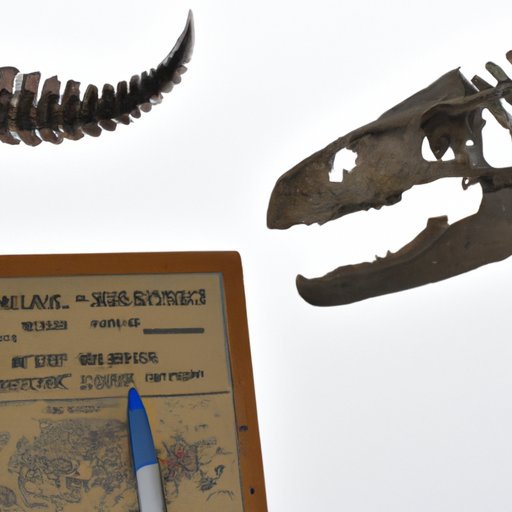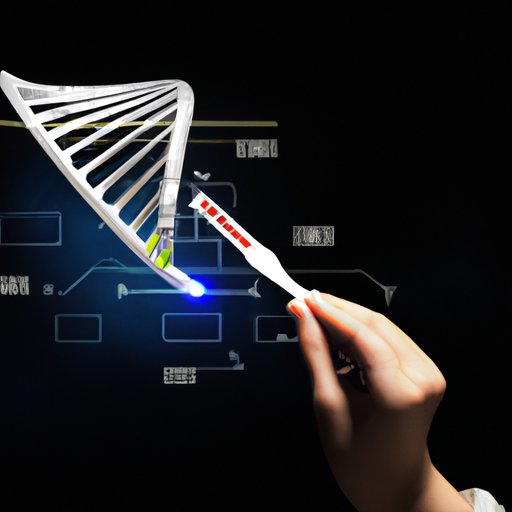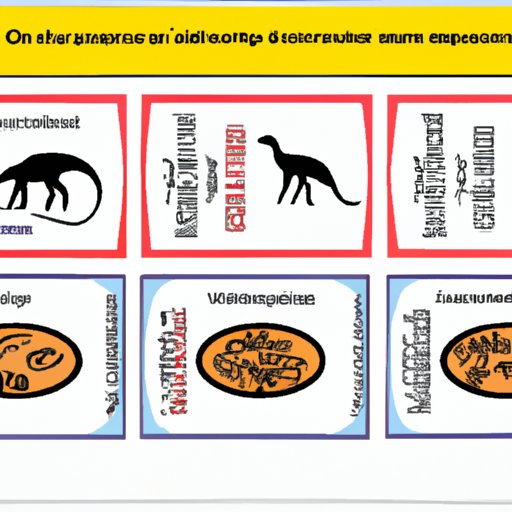Introduction
Evolution is the process by which living organisms change over time to become more adapted to their environment. It is one of the most important concepts in biology and is accepted by almost all scientists as a fact. There is a wealth of evidence from many fields of science that support the theory of evolution. In this article, we will explore the various types of evidence that scientists have used to support the theory of evolution.

Comparing the Fossil Record to Modern Species
One of the most important sources of evidence for evolution is the fossil record. Fossils are the remains of once-living organisms that have been preserved in rock or other sedimentary material. By studying the fossil record, scientists can trace the descent of modern species from their ancient ancestors. The fossil record shows how species have changed over time and provides direct evidence for evolution.
Fossils show that species have undergone “descent with modification” over time. This means that species have evolved gradually, with small changes accumulating over long periods of time. For example, the fossil record shows how horses evolved from small, dog-like creatures to the large, hoofed animals that we see today. The fossil record also provides evidence for the emergence of new species, such as the evolution of birds from dinosaurs.
The fossil record also provides evidence for transitional fossils, which are fossils that show a link between two different species. These fossils provide evidence that one species has evolved into another over time. For example, the fossil record shows a gradual transition from early hominids to modern humans. Transitional fossils provide powerful evidence for the theory of evolution.

Examining DNA Sequences and Genomes
Another source of evidence for evolution comes from DNA sequence analysis. By comparing the DNA sequences of different species, scientists can determine how closely related they are and identify common ancestors. Scientists use this technique to trace the evolution of species over time.
By examining the genetics of similar species, scientists can also uncover evidence for evolution. For example, by comparing the genomes of humans and chimpanzees, scientists have identified genes that are shared by both species. This suggests that humans and chimpanzees share a common ancestor. DNA analysis provides an important source of evidence for the theory of evolution.
Studying Anatomical Comparisons
Another type of evidence for evolution comes from the study of anatomical comparisons. By comparing the physical features of different species, scientists can determine how closely related they are and uncover evidence for common ancestry. For example, by comparing the skeletons of humans and apes, scientists have identified similarities in the bones and muscles that suggest a common ancestor.
Scientists also use anatomical comparisons to examine homologous structures, which are structures that have a similar structure but a different function. For example, the wings of birds, bats, and insects all have a similar structure, but serve different functions. This suggests that these structures evolved from a common ancestor. Homologous structures provide strong evidence for the theory of evolution.
Investigating Embryonic Development
Embryonic development is another important source of evidence for evolution. By comparing the development of embryos from different species, scientists can identify similarities that suggest a common ancestor. For example, the embryos of mammals, birds, and reptiles all go through a stage where they have gill slits, even though they never develop into actual gills. This suggests that these species share a common ancestor.
Embryonic development also provides insight into how developmental processes unfold over time. By studying the development of embryos, scientists can gain a better understanding of how species evolve and adapt to their environment. Embryonic development provides an important source of evidence for the theory of evolution.
Analyzing Geographic Distribution
Geographic distribution is another source of evidence for evolution. By studying the spread of species across different regions, scientists can gain insight into how species evolve and adapt to their environment. For example, by studying the distribution of finches on the Galapagos Islands, scientists were able to uncover evidence for natural selection and the emergence of new species.
Geographic distribution can also provide evidence for the effects of isolation on species. By studying populations of species in isolated areas, scientists can gain insight into how species evolve and adapt over time. Geographic distribution provides an important source of evidence for the theory of evolution.
Examining Artificial Selection in Breeding
Finally, artificial selection in breeding is another source of evidence for evolution. By selectively breeding animals, humans can produce offspring with desired traits. This process mimics the process of natural selection, which is an important mechanism of evolution. By studying the changes brought about by artificial selection, scientists can gain insight into how species evolve over time.
Conclusion
In summary, there is a wealth of evidence from many fields of science that support the theory of evolution. The fossil record, DNA sequences, anatomical comparisons, embryonic development, geographic distribution, and artificial selection in breeding all provide evidence for evolution. Together, these sources of evidence provide a strong foundation for the theory of evolution.
If you are interested in learning more about the evidence for evolution, there are many excellent books and websites that provide detailed information. Understanding the evidence for evolution is essential for appreciating the complexity and beauty of the natural world.
(Note: Is this article not meeting your expectations? Do you have knowledge or insights to share? Unlock new opportunities and expand your reach by joining our authors team. Click Registration to join us and share your expertise with our readers.)
